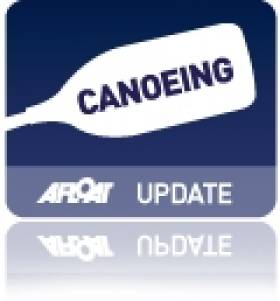Displaying items by tag: River Inchavore
Personal Beacons For Kayakers Recommended In Report On Inchavore Drowning Tragedy
#MCIB - The official report into the death of a kayaker on a Wicklow river last year recommends that anyone kayaking a river of Grade 3 or above should carry a personal locator beacon.
As previously reported on Afloat.ie, Shane Murprhy (21) from Baldoyle in North Dublin drowned while kayaking on the River Inchavore on 13 November 2014.
The inquest into his death this summer heard that Murphy became separated from his group while paddling the river swollen by heavy rains.
Despite righting himself a number of times, he was quickly thrown from his kayak and seen face down in the water before the river took him away from his fellow kayakers.
He was later found trapped in branches amid fast flowing water two sets of rapids down from where he was last seen.
The report into the incident by the Marine Casualty Investigation Board (MCIB) found that the river was rated between Grades 4 and 5 – advanced to expert – and within the capabilities of the group, some of whom had paddled it before without incident, and was only passable in flood conditions such as on that day.
However, it found that the noise of the river made communication between the group very difficult when out of line of sight, which hampered their search for Murphy when he became separated from the rest.
The MCIB recommends that "kayaking groups making descents on remove rivers of Grade 3 or higher carry registered personal locator beacons" or PLBs which would enable early alerting of rescue crews in the event of an emergency.
It also recommends that Canoeing Ireland advise kayakers in such situations to consider using waterproof radios to allow communication between group members.
Additionally it was found that the delay in contacting emergency services, due to lack of mobile phone signal in that remote part of Co Wicklow, "did not impact on the casualty’s survival" in this case.
The MCIB's complete report on the incident is available as a PDF to read or download HERE.
Deceased Named In Wicklow Kayaking Tragedy
#Kayaking - The Irish Mirror reports on tributes pouring in for the kayaker who died on the River Inchavore in Wicklow last Thursday evening (13 November).
Twenty-one-year-old Shane Murphy from Baldoyle in North Dublin was an experienced kayaker, whose death has "affected the community badly", said neighbour Darragh McGhee.
As previously reported on Afloat.ie, the young man died after he was swept away while kayaking with a group on the river near Lough Dan in the Wicklow Mountains.
The heavy rainfall on the day, which quickly swelled the river's waters, is believed to have contributed to the tragedy.
Kayaker Dies On Swollen Wicklow River
#Kayaking - The Irish Times reports that a man has died after being swept away while kayaking on the River Inchavore near Lough Dan in Co Wicklow.
The man, who has yet been unnamed, was out on the popular kayaking stretch yesterday (13 November) with around six others during heavy rain that quickly swelled the river's waters.
Two other kayakers were airlifted with the casualty to Tallaght Hospital but they are not believed to be injured.

























































